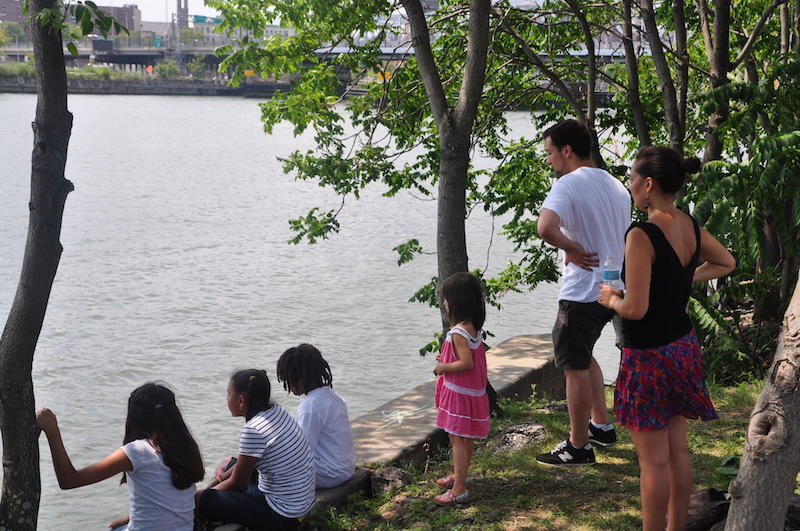Port Morris’ potential as a publicly accessible waterfront gem is rising on the city’s radar.
A report released by the city last year, the NYC Comprehensive Waterfront Plan, sets a 10-year vision for economic development, recreation and resiliency to flooding caused by climate change in neighborhoods on city-owned, waterfront property.
The report notes that the city has invested little to nothing to allow public access along the waterfront in these neighborhoods. Fewer than half of Bronxites who live within a half-mile of a waterfront have safe pedestrian access to those coastal stretches, compared with 90 percent of Manhattanites.
At a virtual meeting on Aug. 24, representatives from the city’s Waterfront Alliance were joined by volunteers from four community groups that have been working informally with local residents to convert neglected waterfront parcels into green oases in their neighborhoods.
Community group South Bronx Unite has been working with area residents for a decade to find ways to convert a sliver of Harlem River waterfront known as the Lincoln Avenue Street End into a recreational hub. The site is currently surrounded by a convergence of decidedly non-recreational interests, including a newly built apartment complex, the Oak Point Rail Yard, and waste transfer stations.
According to the Waterfront Alliance’s Karen Imas, the site is “in dire need of shoreline stabilization,” due to a deteriorated bulkhead, and would benefit from a “coordinated effort from city and state to repair it.”
The Lincoln Avenue Street End is part of a broader waterfront plan South Bronx Unite established a decade ago, stemming from a series of public forums the group organized, and that the New York State Dept. of Environmental Conservation endorsed. However, said South Bronx Unite’s executive director, Arif Ullah, the State’s blessing in 2014 “sadly didn’t translate to any resources or action from policy makers or state agencies.”
“What’s tragic and upsetting is that there’s virtually no access to the waterfront,” in Port Morris, Ullah continued. “Some neighborhood residents don’t even know that the water is so close. The Lincoln Avenue Street End is one of the only access points and even then it’s dangerous to reach,” due to “the constant stream of garbage trucks.”
With its power plants, garbage facilities and a tangle of expressways pitted against an average of just one green space per 60,000 residents, health problems caused by pollution have notoriously plagued the South Bronx for decades.
To continue to push these projects, The Waterfront Alliance plans to:
- Brief elected officials who represent the sites;
- Seek funding for engineering and concept design and capital improvements;
- Seek grant funding for additional site analysis;
- Host community-driven public meetings;
- And find funding to cover long-term maintenance of the sites.
Along with the Lincoln Avenue Street End, other sites whose community groups presented at the virtual forum included two from Queens and one from Staten Island.
Criteria used to gauge the waterfront sites under consideration included safety, commercial traffic, and potential uses, along with community interest in the sites as shown by the grassroots groups organizing to improve them.
The federal Center for Disease Control’s social vulnerability index and census data were tapped to determine what communities citywide would benefit the most from newly accessible waterfront parks.
Imas of the Waterfront Alliance added that there could be funding opportunities in the recent federal infrastructure bill, as well as a state environmental bond act that will be on the ballot in November’s general election.
She added that the city’s report makes the case that New Yorkers for Parks’ call for the city to increase its parks budget from .6 to a full 1% for parks is crucial.
The effects of climate change, such as rising waters and the heat island effect, should be another major incentive for government to invest in overlooked waterfront street ends, the panelists emphasized.
“Any capital improvements provide a lot of opportunity for green infrastructure, storm water management, drainage,” said Imas. “We need to look at waterfront projects in that way.”

